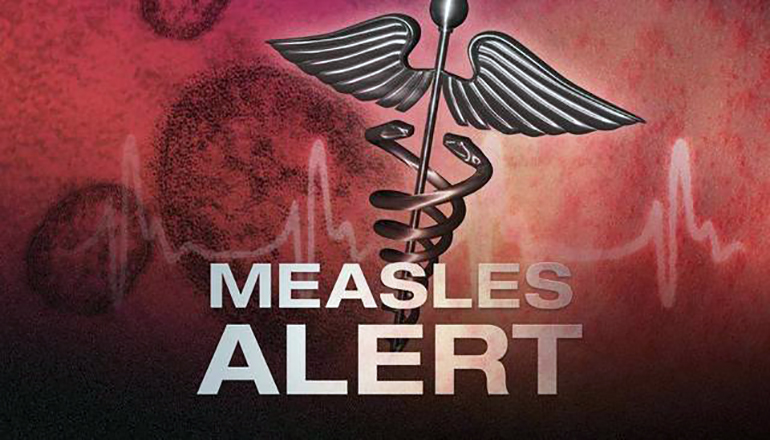The Missouri Department of Health and Senior Services (DHSS) is working with the Kansas City, Missouri Health Department to notify individuals who may have been exposed to measles in the Kansas City, Missouri area. Currently, there are 10 cases of measles among Missouri residents identified as part of an ongoing measles investigation.
Known locations where exposures may have occurred include the following:
| Date | Location Name | Exposure Timeframe | Location Address |
|---|---|---|---|
| April 12, 2018 | Casey’s General Store | Noon-2 p.m. | 112 Branch St, Platte City, MO |
| April 12, 2018 | Hy-Vee | 11 a.m.-1:15 p.m. | 207 NE Englewood Rd Kansas City, MO |
| April 12, 2018 | CommunityAmerica Credit Union | 11 a.m.-1:15 p.m. | 207 NE Englewood Rd Kansas City, MO |
| April 12, 2018 | Jasmine Mini Mart | 11 a.m.-1:15 p.m. | 406 NW Englewood Rd Kansas City, MO |
| April 14, 2018 | The Children’s Place – Zona Rosa Town Center | 11:30 a.m.-2:30 p.m. | 7220 NW 86th Pl Kansas City, MO |
| April 14, 2018 | Cosentino’s New Mark Sunfresh | 2:30 p.m.-5: 30 p.m. | 10225 N Oak Trafficway Kansas City, MO |
| April 15, 2018 | Cosentino’s New Mark Sunfresh | 2 p.m.-4:40 p.m. | 10225 N Oak Trafficway Kansas City, MO |
| April 18, 2018 | Saint Joseph Medical Center, Main Entrance and Elevators | 8:45 a.m.-2 p.m. | 1000 Carondelet Dr Kansas City, MO |
| Note: Locations where individuals may have been exposed to measles but can be identified, are not listed. Those individuals will be notified separately. | |||
Measles is a highly contagious, acute viral illness that is transmitted by contact with an infected person through coughing and sneezing. Patients are considered to be contagious from four days before until four days after the rash appears. The measles virus can remain infectious in the air for up to two hours after an infected person leaves an area. Measles is vaccine-preventable disease. You can check with your health care provider to make sure you and your family are up-to-date on vaccines.
The symptoms of measles generally include a rash that appears 7-21 days after exposure. Measles typically begins with:
- A high fever
- Cough
- Runny nose
- Red, watery eyes
Three to five days after symptoms begin, a rash starts to appear. The rash usually looks like flat red spots that break out first on the face and spread downward to the neck, trunk, arms, legs, and feet.
People who may have been exposed to measles should contact their healthcare provider if they develop cold-like symptoms with a fever and/or rash as described above. If you may have been exposed to measles and you have symptoms, you should NOT go to any health care facility without calling first. This will help the healthcare facility prepare for your arrival and allow the facility to provide instructions to you to reduce possible exposures to others at the facility.
Director of DHSS, Dr. Randall Williams, says, “If someone has measles, it is important they stay isolated from others to keep from spreading it. Measles is extremely contagious, and you can have very severe outcomes. For every 1,000 children who get measles, one or two will die from it. If you are diagnosed with measles, it is important to follow the instructions of your health care provider and public health officials to protect your family and community.”







